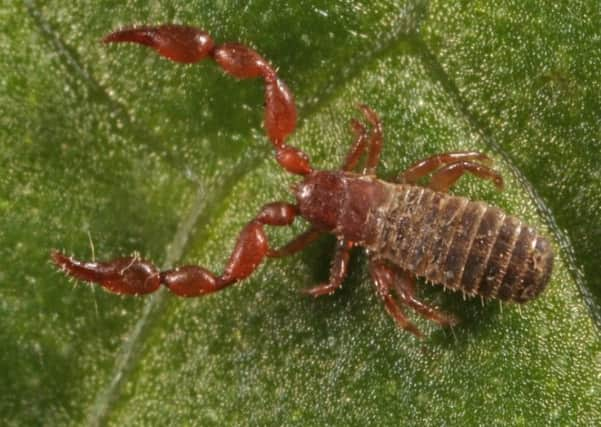Bugs and insects feared extinct discovered near Loch Ness


A host of rare and previously unseen bugs and insects have been discovered at a conservation estate in the Highlands – including some creatures that were feared to be extinct.
Unusual finds in the past 12 months include a midge never before found in the UK and a fierce-looking pseudoscorpion, thought to live only south of the River Tay.
Advertisement
Hide AdAdvertisement
Hide AdThe latest discoveries bring the total UK biodiversity “firsts” found at Dundreggan, on the shores of Loch Ness, to 11. Researchers at the charity Trees for Life, which runs the 10,000-acre estate, said the Glen Moriston site is proving to be a “lost world” for wildlife.
Other key findings during 2016 surveys were two rare gnats whose larvae feed on fungi. One of these has only been recorded at four other UK sites, while the other is known at only a handful of places in Scotland and had not been seen since 1990.
Trees for Life took over the Highland estate in 2008 with the aim of restoring part of Scotland’s native woodland.
“Dundreggan is a special part of the Caledonian Forest that keeps on revealing beautiful, interesting and rare species,” said charity founder Alan Watson Featherstone.
“The surprisingly rich wealth of life in this corner of the Highlands highlights the importance of concerted conservation action to protect and restore Scotland’s wild places.”
Two rare parasitic wasps and a micro-moth were also among the most recent finds, while three types of sawfly, an aphid, two aphid parasitoids, three fungus gnats and a mite discovered on the estate in recent years have never before been recorded in the UK.
Surveys at Dundreggan have also revealed the second-ever British record of a waxfly, a golden horsefly seen only once in Scotland since 1923, and a juniper shieldbug.
In total, more than 3,300 species have now been catalogued at the restoration site – at least 68 of which are earmarked as priorities for conservation.
Advertisement
Hide AdAdvertisement
Hide AdMr Watson Featherstone added: “Our latest discoveries add to an already remarkable range of rare and endangered species found at Dundreggan – some of which were previously unknown in the UK or Scotland, or which were feared to be extinct.”
Dundreggan contains substantial areas of ancient woodlands, including remnants of the original Caledonian Forest, birch-juniper woodlands and the largest expanse of dwarf birch in Scotland.
By planting trees and encouraging natural regeneration, conservationists aim to create an unbroken native woodland link between Glen Moriston and Glen Affric.
Work includes planting 500,000 trees and efforts to bring back rare woodland plants and wildlife. The charity also operates research and education programmes.